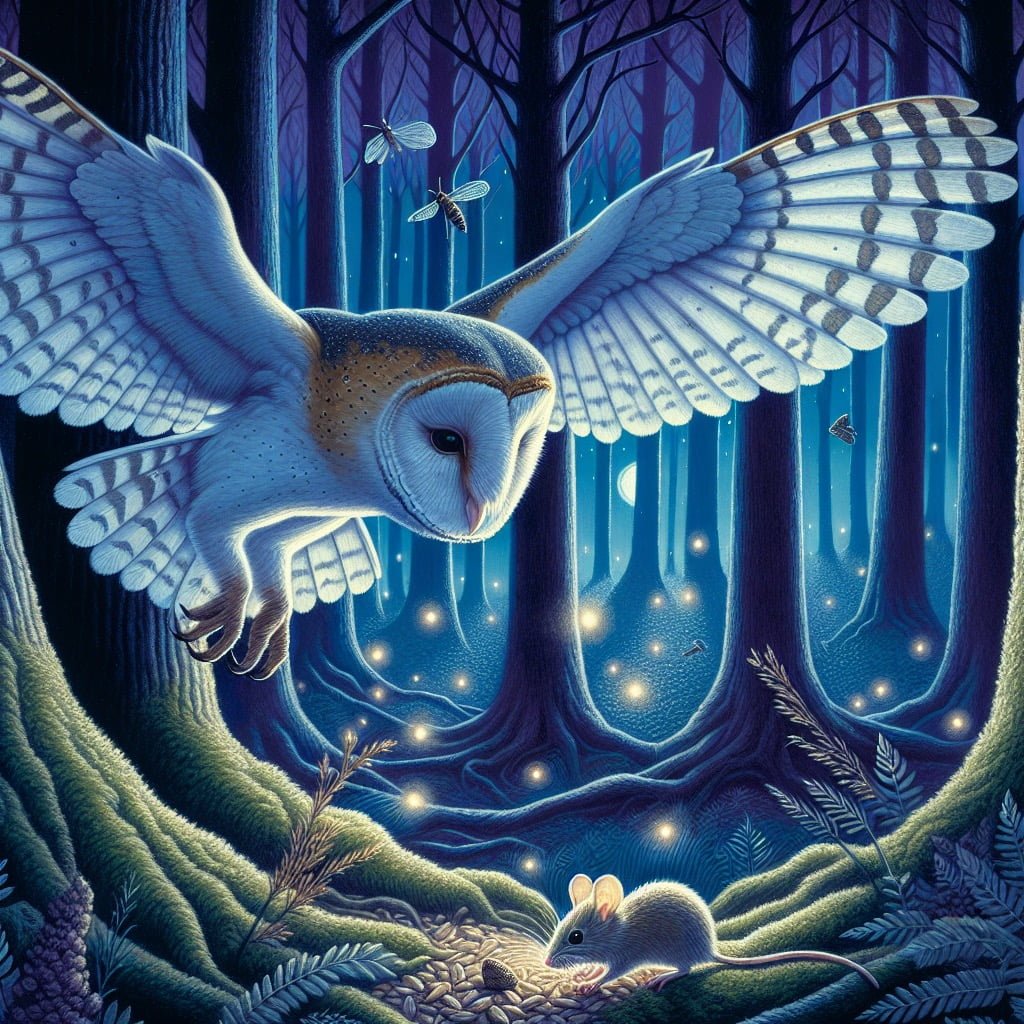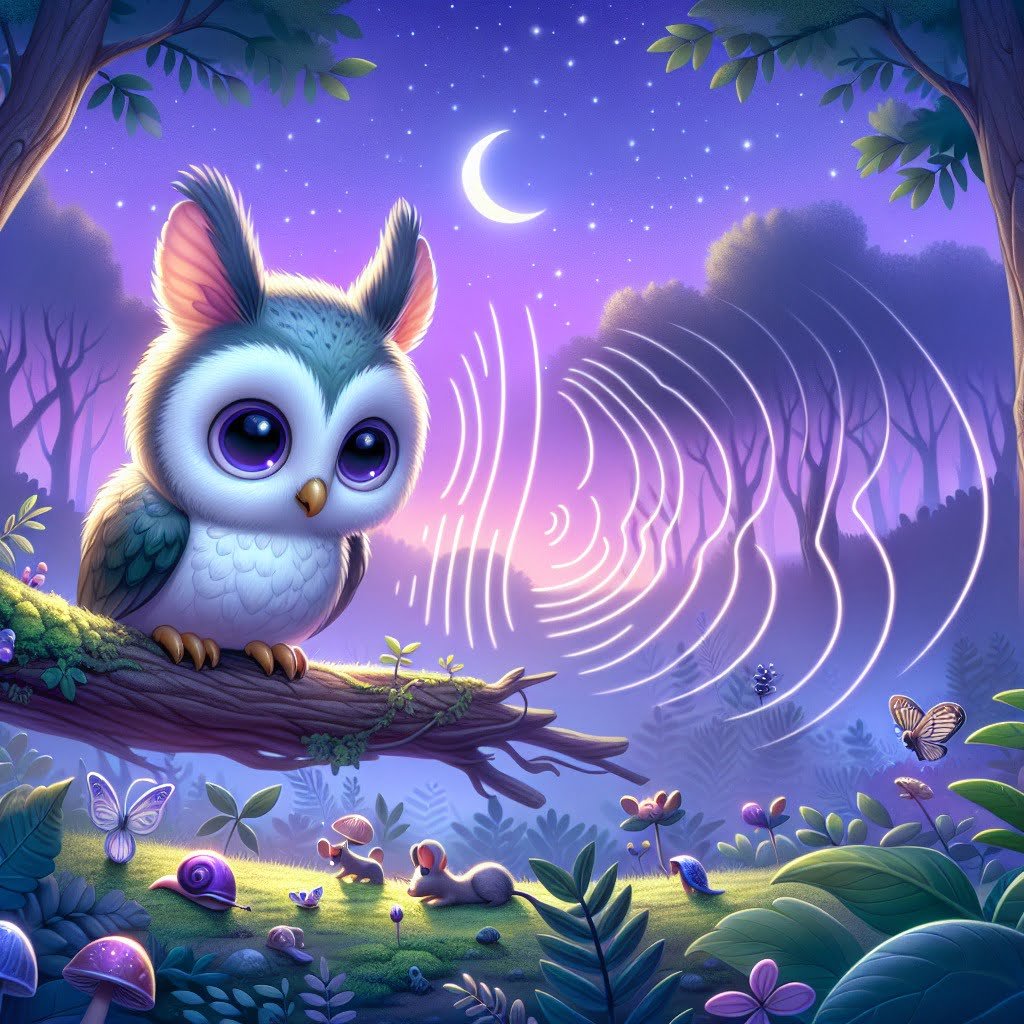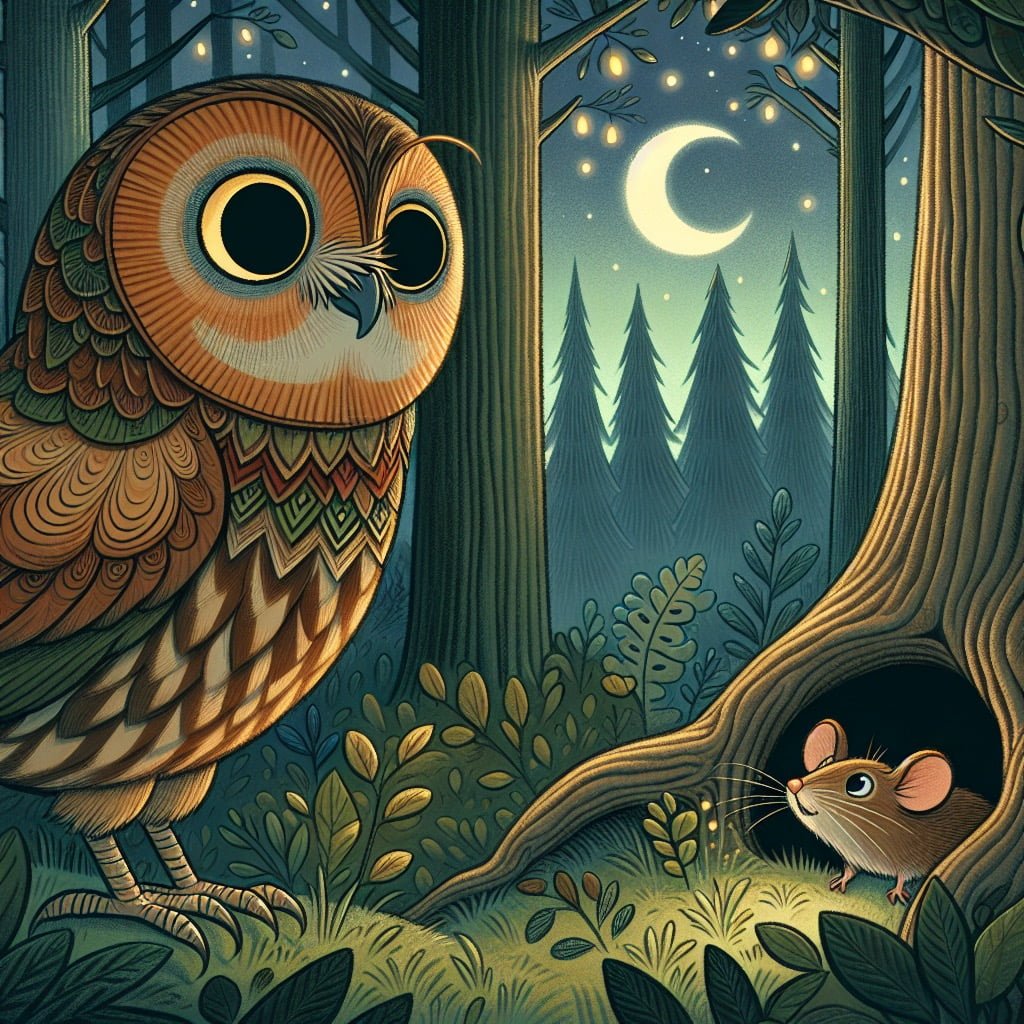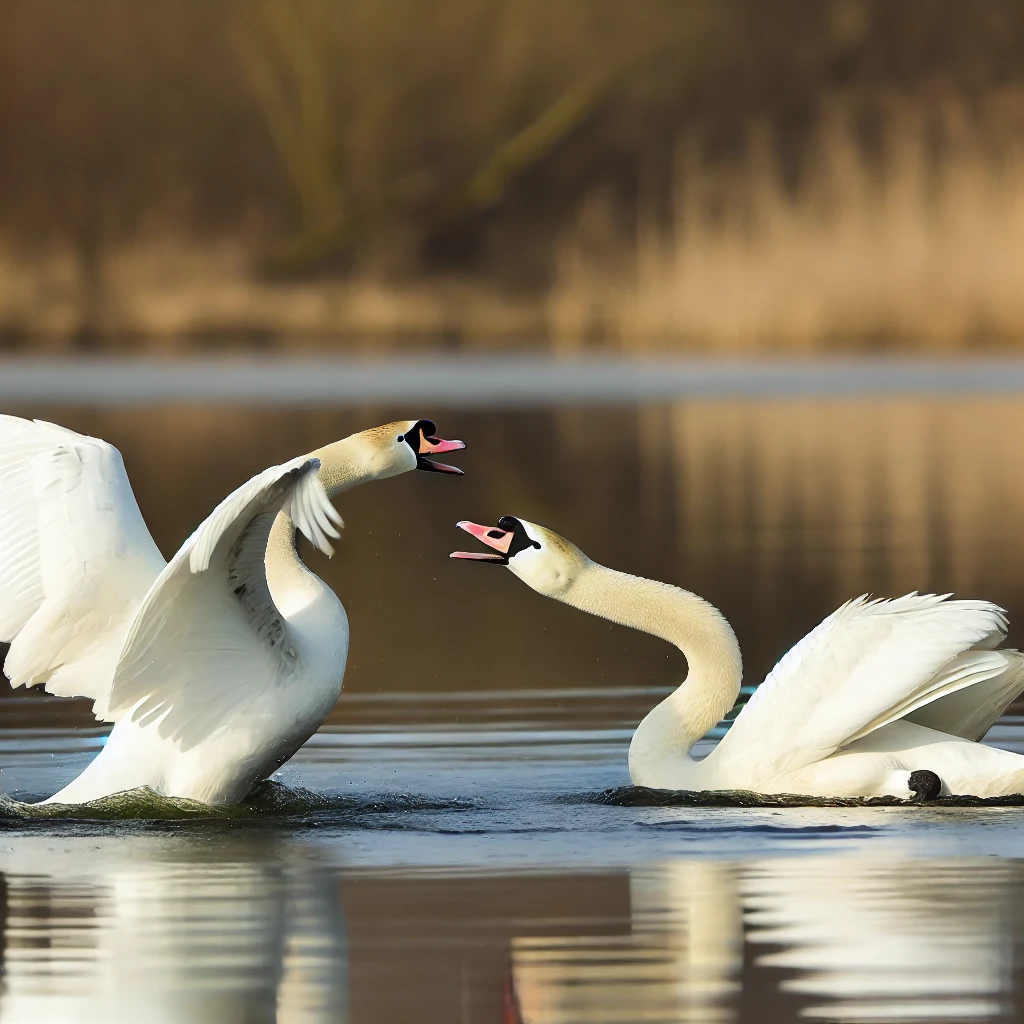Welcome to an exciting journey into the world of Owl Facts For Kids! Dive into the captivating realm of these majestic creatures and uncover a treasure trove of fascinating information that will both educate and enchant young minds. From their incredible ability to rotate their heads 270 degrees to their silent flight and exceptional camouflage skills, owls are truly remarkable birds that hold a special place in the animal kingdom. Join us as we explore the mysterious universe of owls and discover why they are not only symbols of wisdom but also vital players in maintaining ecological balance. Whether you are a nature enthusiast, a curious child, or simply intrigued by the wonders of the natural world, there is something intriguing and awe-inspiring about these enigmatic birds. So buckle up and get ready for an adventure filled with fun facts and amazing insights into the fascinating world of owls!
Owl Facts For Kids
1. Owls Can Rotate Their Heads 270 Degrees

For younger kids: Owls can turn their heads almost all the way around!
For older kids: Owls have flexible necks with extra vertebrae that allow them to rotate their heads up to 270 degrees in either direction, helping them to see in their surroundings without moving their bodies.
Detailed explanation:Owls are fascinating creatures that captivate the imagination of both children and adults alike. One of the most impressive abilities that owls possess is their unique neck flexibility, which allows them to rotate their heads up to 270 degrees. This incredible feat is made possible by their anatomy, specifically their bone structure and blood supply to the brain.
The owl’s neck contains twice as many vertebrae as the human neck, which enables them to achieve such a wide range of motion. These vertebrae are equipped with a network of blood vessels and air sacs that prevent blood flow from being cut off when the owl twists its head. Additionally, owls have large, forward-facing eyes that are fixed in place, so rotating their head is necessary for them to see their surroundings.
This remarkable ability serves several purposes for owls in the wild. It allows them to scan their environment for prey without moving their entire body, minimizing the risk of detection by potential predators. Owls are primarily nocturnal hunters, so being able to rotate their heads to such a degree is crucial for their survival.
In conclusion, owl facts for kids often include their impressive neck flexibility, which enables them to rotate their heads up to 270 degrees. This unique adaptation is a testament to the incredible evolutionary adaptations that have allowed owls to thrive in diverse environments around the world.
Owl Facts For Kids
2. Owls Can Fly Silently

For younger kids: Owls can sneak up on their prey without making any noise!
For older kids: Owls have specially designed feathers and wings that enable them to fly silently, making them exceptional hunters with the ability to surprise their prey.
Detailed explanation:Owls are truly fascinating creatures, and one of the most impressive aspects of their biology is their ability to fly silently. This unique trait is essential for owls, as it allows them to hunt effectively without alerting their prey to their presence.
So, how exactly do owls manage to fly in near silence? The secret lies in their specialized wing structure and feather composition. Owl feathers have comb-like serrations on the leading edge, which break up turbulent airflow over the wings. This turbulence is what typically creates noise as birds fly, but the serrated edges of owl feathers help to reduce this noise significantly. Additionally, the soft, velvety texture of owl feathers further helps to muffle any sound that might be produced during flight.
In addition to their specialized feathers, owls also have uniquely shaped wings that contribute to their silent flight. Compared to other birds, owl wings are larger and broader relative to their body size. This allows them to generate more lift and fly more slowly, reducing the amount of noise produced.
Overall, the combination of serrated feathers, soft texture, and wing shape allows owls to move through the air with remarkable stealth. This adaptation is crucial for their survival as predators, allowing them to swoop down on unsuspecting prey without being detected. Next time you see an owl, remember this fascinating Owl Facts For Kids and marvel at the silent efficiency of these incredible birds.
Owl Facts For Kids
3. Owls Have Amazing Hearing

For younger kids: Owls have super hearing and can hear even the tiniest noises!
For older kids: Owls possess asymmetrical ear openings, allowing them to pinpoint the location of prey with remarkable accuracy. They can also hunt in complete darkness using their extraordinary hearing abilities.
Detailed explanation:Owls are incredible creatures known for their exceptional hearing abilities. In fact, owls have some of the most advanced auditory systems in the animal kingdom. They have specialized features that allow them to pinpoint the exact location of sounds with remarkable precision.
One fascinating aspect of owl anatomy that contributes to their amazing hearing is the structure of their ear feathers. These feathers are asymmetrical, with one being longer than the other. This asymmetry helps to channel sound waves into the owl’s ears, allowing them to hear even the slightest noises with great clarity. Additionally, owls have large ear cavities that are positioned at slightly different heights on their heads. This unique arrangement helps owls to locate the source of a sound in both the vertical and horizontal planes.
Another key factor in owls’ exceptional hearing is their facial disc. This disc is made up of specialized feathers that help to direct sound waves towards the owl’s ears. The shape and structure of the facial disc play a crucial role in enhancing the owl’s ability to detect and locate prey in complete darkness.
Overall, the combination of asymmetrical ear feathers, large ear cavities, and a specialized facial disc allows owls to be incredibly efficient hunters, even in low light conditions. These incredible adaptations make owls one of the most fascinating and adept predators in the animal kingdom.
In conclusion, Owl Facts For Kids, owls truly have amazing hearing abilities that set them apart from other birds and animals. Their unique anatomical features and specialized adaptations allow them to excel in locating and capturing prey with unparalleled precision. Next time you hear the haunting call of an owl in the night, remember that it is a testament to their remarkable auditory skills.
Owl Facts For Kids
4. Owls Can Swivel Their Heads Without Moving Their Eyes

For younger kids: Owls can move their heads and eyes separately!
For older kids: Owls have forward-facing eyes, which they cannot move. To compensate for this, they can turn their heads almost completely around to focus on objects and prey without moving their eyes.
Detailed explanation:Owls are fascinating creatures known for their unique abilities, such as their silent flight and exceptional night vision. One of the most intriguing facts about owls is their ability to swivel their heads without moving their eyes. This remarkable skill is due to several anatomical adaptations that make owls highly specialized predators.
Owls have large, forward-facing eyes that are fixed in their sockets, unlike humans whose eyes can move independently of their heads. This fixed eye position means that owls cannot move their eyes side to side or up and down like we can. To compensate for this limitation, owls have evolved the ability to rotate their heads up to 270 degrees in either direction. This incredible range of motion allows owls to scan their surroundings without having to move their bodies, making them efficient hunters that can spot prey from great distances.
The secret to an owl’s head-swiveling prowess lies in its unique neck structure. Owls have extra vertebrae in their necks that give them the flexibility to rotate their heads far beyond what is possible for other birds. Additionally, owls have large, forward-facing eyes that are surrounded by a bony structure called a sclerotic ring. This ring provides support and protection for the eyes, allowing owls to move their heads without damaging their delicate eye structures.
Overall, the ability of owls to swivel their heads without moving their eyes is just one of the many fascinating Owl Facts For Kids that highlight the incredible adaptations and behaviors of these amazing birds.
Owl Facts For Kids
5. Many Cultures Consider Owls to Bring Wisdom

For younger kids: Owls are often seen as wise and smart birds!
For older kids: In various cultures and folklore, owls are associated with wisdom and knowledge due to their mysterious nature and unique behaviors, such as their nocturnal habits and silent flight.
Detailed explanation:Owls have long been revered in various cultures around the world for their mystique and perceived wisdom. In many ancient traditions, owls are seen as symbols of knowledge, intuition, and foresight. This belief likely stemmed from the owl’s nocturnal habits, keen eyesight, and ability to move silently through the night, all of which were considered traits of a wise and observant creature.
In Greek mythology, the owl was associated with Athena, the goddess of wisdom, and was even used as a symbol on ancient coins. The Romans also believed that owls had the ability to foresee events and bring protection. In Native American cultures, owls were often seen as messengers of the spirit world and were thought to convey important insights to those who paid attention to their hoots.
Even in modern times, owls continue to be a popular symbol of wisdom and clarity. Many children’s books and cartoons feature owls as wise characters who offer guidance and support to the protagonist. The popularity of owl-themed merchandise and decor further highlights the enduring fascination with these enigmatic birds.
Owls are fascinating creatures in their own right, with unique adaptations that contribute to their reputation as symbols of wisdom. Their ability to rotate their heads almost 360 degrees, exceptional hearing, and silent flight make them formidable hunters and observers of the night. By studying owl facts for kids, we can gain a deeper appreciation for these majestic birds and the cultural significance they hold in various societies worldwide.
Owl Facts For Kids
6. Owls Can Swallow their Prey Whole

For younger kids: Owls can eat their food without chewing it!
For older kids: Owls have powerful digestive systems that allow them to consume their prey whole, including bones and fur, which are later regurgitated as a pellet.
Detailed explanation:Owls are fascinating creatures with many interesting characteristics, one of which is their ability to swallow their prey whole. This unique adaptation is due to the structure of their digestive system, which allows them to consume their food in large chunks without needing to chew it into smaller pieces.
One of the main reasons owls are able to swallow their prey whole is their incredibly flexible neck. Owls have the ability to rotate their necks up to 270 degrees in either direction, which allows them to quickly and efficiently swallow their food without the need to tear it apart. This flexibility is crucial for owls when hunting, as it allows them to quickly and discreetly consume their prey without attracting attention from potential predators.
In addition to their flexible necks, owls also have powerful digestive enzymes that help break down their food quickly. These enzymes work to break down the proteins, fats, and carbohydrates in their prey, allowing the owl to extract the nutrients it needs for energy and growth.
Owl facts for kids often include information about their unique hunting and eating habits, including their ability to swallow their prey whole. This fascinating behavior is just one of the many adaptations that make owls such successful predators in the animal kingdom. By understanding how owls are able to consume their food in this way, we can gain a greater appreciation for the complexity and efficiency of these amazing birds.
Owl Facts For Kids
7. Some Owls Have Feathered “Ear” Tufts

For younger kids: Some owls have feathers on their heads that look like ears!
For older kids: Certain owl species have feathered tufts on their heads called “ear” tufts, which are not actually ears, but rather display feathers that help with camouflage and communication.
Detailed explanation:Owl Facts For Kids is a fascinating topic to explore, especially when it comes to the unique physical features of these majestic birds. One interesting fact about some owls is that they have feathered “ear” tufts. These tufts are not actually ears, but rather feathers that stick up on either side of an owl’s head, giving the appearance of ears.
Now, why do some owls have these ear tufts? One theory is that they may help with camouflage, as the tufts can help break up the outline of the owl’s head, making it harder for prey to spot them. Another theory is that the tufts may play a role in communication and signaling between owls, especially during mating season.
For kids who are fascinated by Owl Facts For Kids, these ear tufts can be a fun and interesting feature to learn about. They can also serve as a reminder of how diverse and unique the animal kingdom can be. So, next time you see an owl with these feathered ear tufts, remember that they are not actually ears, but rather a cool and intriguing part of what makes owls such fascinating creatures. Whether it’s for camouflage, communication, or simply as a way to add to their overall mystique, these ear tufts are just one of the many reasons why owls are so beloved by bird enthusiasts of all ages.
Owl Facts For Kids
8. Owls Come in a Variety of Sizes

For younger kids: Owls come in all different sizes, from very small to very big!
For older kids: There are over 200 species of owls, ranging in size from the tiny Elf Owl, which is around 5 inches tall, to the massive Blakiston’s Fish Owl, with a height of up to 28 inches.
Detailed explanation:One fascinating fact about owls is that they come in a wide variety of sizes. From the tiny Elf Owl, which is only about 5 inches tall and weighs less than an ounce, to the majestic Eurasian Eagle Owl, which can stand at over 2 feet tall with a wingspan of up to 6 feet, there is a diverse range of sizes among these nocturnal birds of prey.
Owl Facts For Kids often highlight the various sizes of these captivating creatures. For example, the Northern Pygmy Owl, which is only around 6 inches tall, has a surprisingly fierce hunting ability despite its small stature. Similarly, the Great Horned Owl, one of the largest owl species in North America, can stand at more than 2 feet tall and is known for its deep hooting call that echoes through the night.
The diverse sizes of owls are not just for show; they actually play a crucial role in the survival and hunting strategies of each species. Smaller owls, like the Northern Saw-whet Owl, are agile and can swoop down quickly to catch insects or small rodents, while larger owls, like the Snowy Owl, have the strength and size to take down larger prey such as rabbits or ducks.
In conclusion, the fact that owls come in a variety of sizes is a testament to the adaptability and versatility of these fascinating birds of prey. Owl Facts For Kids can provide valuable insight into the world of these majestic creatures and the unique traits that make each species so special.
Owl Facts For Kids
9. Owls Have Excellent Camouflage Abilities

For younger kids: Owls are really good at hiding and blending in with trees and leaves!
For older kids: Owls possess intricate patterns and colors on their feathers that enable them to blend seamlessly with their natural surroundings, providing them with effective camouflage and protection from predators.
Detailed explanation:Owls are fascinating creatures with incredible camouflage abilities that help them blend seamlessly into their surroundings. These nocturnal birds of prey have evolved over time to be masters of disguise, making them highly effective hunters and elusive prey.
One of the key adaptations that contribute to owls’ superb camouflage abilities is their specialized feathers. The coloration and patterning of an owl’s feathers are designed to mimic the texture and colors of their natural habitat, whether it be the bark of a tree, the dappled sunlight filtering through leaves, or the snow-covered ground. This allows owls to remain virtually invisible to both predators and prey, giving them a significant advantage in the wild.
In addition to their feather patterns, owls also have unique physical characteristics that aid in their camouflage. For example, the facial discs of some owl species help to direct sound towards their ears, allowing them to locate prey in the dark without being seen. Their ability to rotate their heads almost 270 degrees also plays a role in their camouflage, as it allows them to blend in seamlessly with their surroundings by changing their silhouette.
Owl Facts For Kids are a great way to introduce children to these mysterious and mesmerizing creatures. By learning about owls’ camouflage abilities and other fascinating traits, kids can develop a greater appreciation for the natural world and the importance of conservation. Next time you’re out in nature, keep an eye out for these elusive birds and marvel at their incredible camouflage skills.
Owl Facts For Kids
10. Owls are Vital for Pest Control

For younger kids: Owls help keep the countryside pest-free by catching mice and bugs!
For older kids: Owls play a crucial role in maintaining ecological balance by controlling rodent populations, thus aiding in pest control and benefiting agricultural and natural ecosystems.
Detailed explanation:Owls play a crucial role in pest control in various ecosystems around the world. These silent nocturnal hunters are highly efficient at preying on rodents, insects, and other small mammals that can cause damage to crops, gardens, and forests. By keeping the populations of these pests in check, owls help maintain a delicate balance in the ecosystem.
One of the most fascinating Owl Facts For Kids is their exceptional hunting abilities. Owls have keen eyesight and acute hearing, which allow them to spot their prey from great distances and swoop down silently to catch it. Their special feathers allow them to fly silently, making it easier for them to surprise their prey. Owls also have powerful talons that enable them to grasp and carry off their prey with ease.
In addition to being efficient hunters, owls also serve as indicators of the health of an ecosystem. A decline in owl populations can signal an imbalance in the food chain, possibly due to a decrease in the availability of prey or the presence of toxins in the environment. By studying owl populations, scientists can gain valuable insights into the overall health of an ecosystem and take measures to protect it.
Overall, owls are fascinating creatures that play a vital role in maintaining the balance of nature. By controlling pest populations, they help ensure the health and sustainability of ecosystems for future generations to enjoy.
Did You Know?
Owls are often featured in literature and popular culture as symbols of mystery, intelligence, and legend, making them a constant source of fascination and enchantment.
Summary of Owl Facts For Kids
Delve into the captivating world of owls with our latest blog post, “Owl Facts For Kids.” Owls have long been a source of fascination and wonder, and in this post, we explore the unique abilities and characteristics of these magnificent creatures in a way that is both educational and entertaining for children of all ages. From their near-silent flight and exceptional night vision to their fascinating hunting techniques and communication methods, there is so much to discover about owls.
By learning more about owls, children can gain a greater appreciation for the natural world and the diverse species that inhabit it. Fun facts such as how owls regurgitate pellets containing undigested bones and fur from their prey, or how they can rotate their necks up to 270 degrees, are sure to captivate young minds and inspire a love for nature and wildlife.
Exploring the world of owls not only expands knowledge and understanding of these remarkable birds, but also fosters a sense of wonder and appreciation for the intricate web of life that surrounds us. Whether you’re a seasoned bird enthusiast or simply curious about the mysterious world of owls, there is much to be gained from diving into the fascinating realm of these majestic creatures. So why wait? Read more about “Owl Facts For Kids” and ignite a passion for nature and wildlife in your child today.
Sources and additional information for Owl Facts For Kids
WikipediaBritannicaSan Diego Zoo KidsThe Smithsonian InstitutionDK Find Out!Australian MuseumWorld Wildlife FundThe Nature ConservancyAnimal PlanetMonterey Bay AquariumPBS NatureSmithsonian’s National Zoo & Conservation Biology InstituteWorld Wildlife FundAnimal Diversity Web (University of Michigan)IUCN Red List of Threatened SpeciesThe Cornell Lab of Ornithology – All About BirdsNational Audubon SocietyEncyclopedia of LifeSeaWorld Parks & EntertainmentAustralian Museum – AnimalsEncyclopedia of Life




